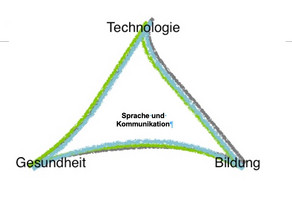New publication from the project Pupillometry in the diagnosis of multilingual children

The diagnosis of language impairments in childhood poses a challenge in the context of multilingualism, as there are currently no effective methods for the early and therefore preventative detection of language impairments in multilingual children. This deficit exists above all because conventional diagnostic approaches are dependent on explicit linguistic reactions, which makes early application with bilingual children almost impossible. In this context, pupillometry proves to be a promising alternative, as it captures children's implicit reactions to language without relying on explicit speech acts. Previous studies have shown that pupillometry can be successfully used to investigate language processing in pre-verbal and early verbal groups.
This paper presents a study of bilingual children aged two to six years (N = 51) with limited German exposure of less than twelve months. The main aim is to examine the sensitivity of these children to grammatical violations in their second language German in order to draw conclusions about possible impairments at the language processing level.
Despite its promising potential applications, the pupillometry method also poses challenges. These are explained in more detail in this study.
The article discussing the advantages and disadvantages of pupillometry in the risk diagnosis of a language development disorder in multilingual children has been published in the anthology in honor of Prof. Dr. Christian Bühler:
Röbstek, L., Neitzel, I., & Scherger, A.-L. (2024). Opportunities and limitations of technology-based risk diagnostics - Pupillometric assessment of language impairments in multilingual children with little contact with German. In Vanessa Heitplatz & Leevke Wilkens (Eds.), Rehabilitation technology in transition: A human-technology-environment perspective (pp. 613-633). Eldorado. eldorado. tu-dortmund.de/handle/2003/42377




